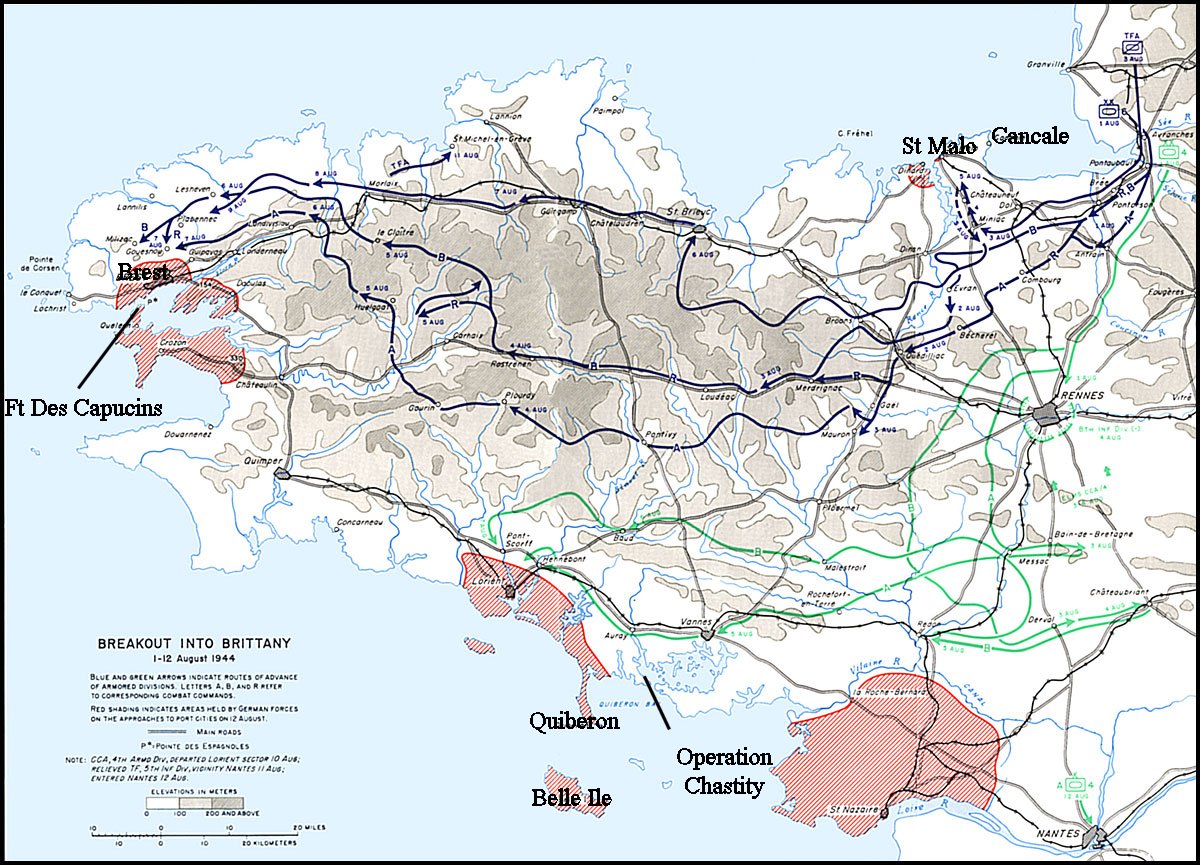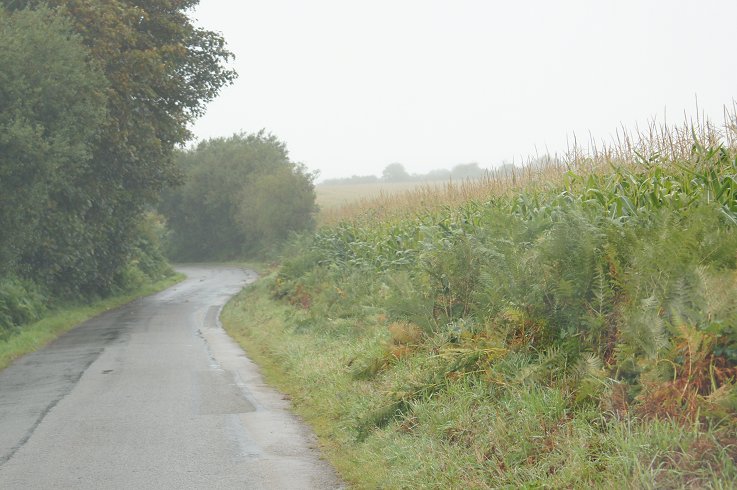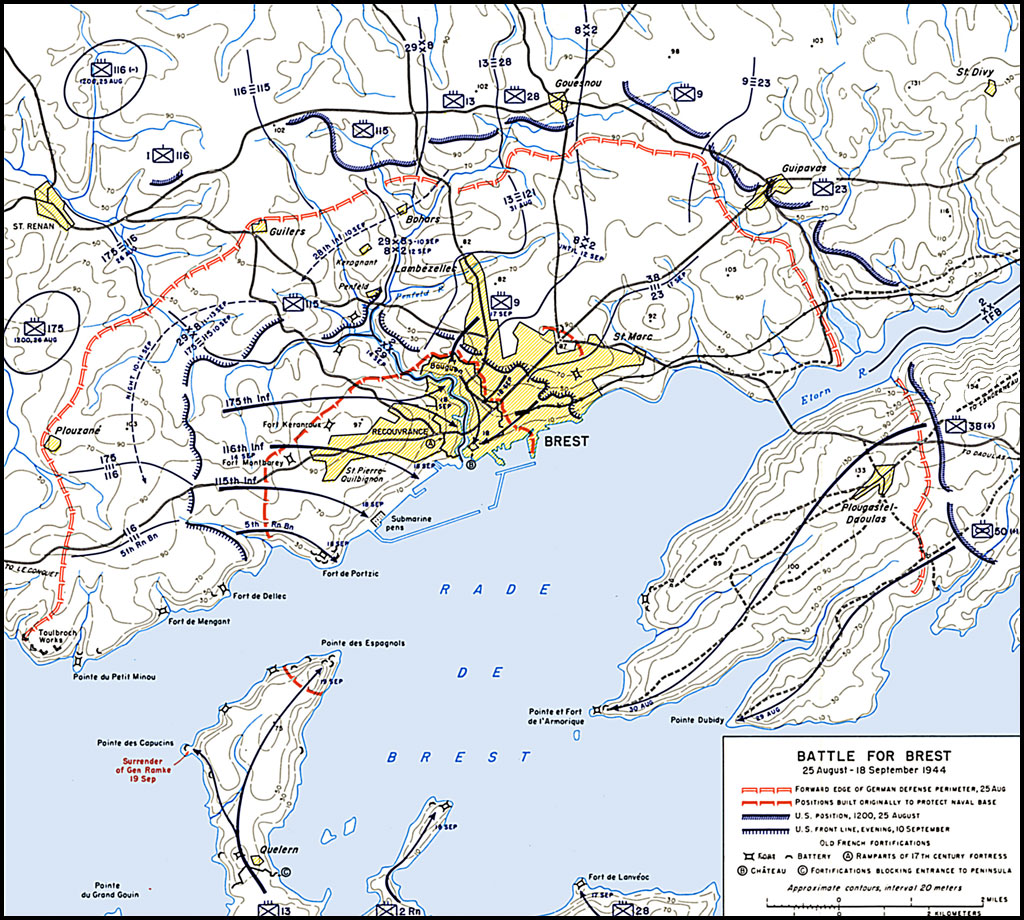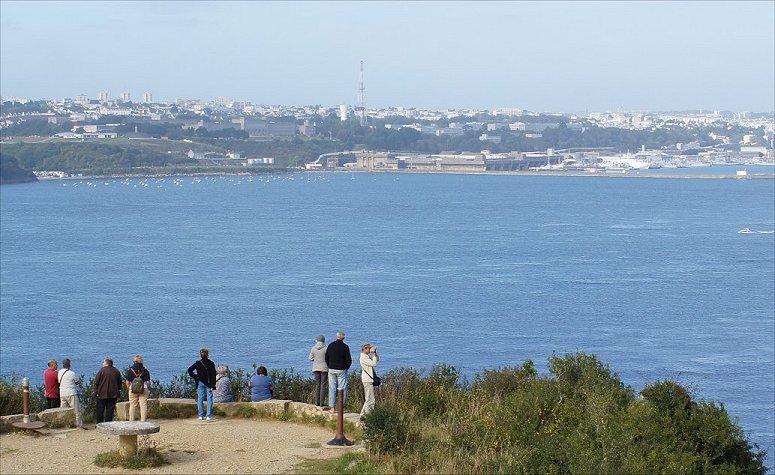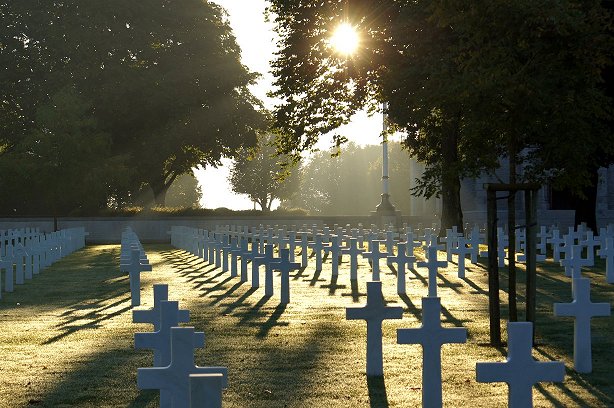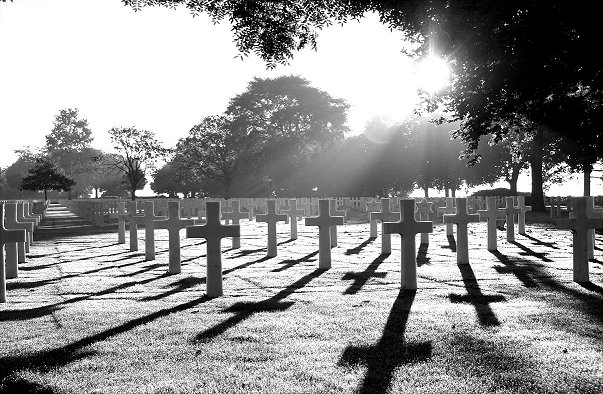The German army in Normandy was belated encircled on August 21st as the Falaise Gap was closed, and Paris was liberated on August 25th. The Allied armies continued east, with the vital port of Antwerp liberated on September 4th, even as efforts in Brittany continued. St. Malo had been the first target, captured in battle from August 4th through 17th with the island offshore that blocked harbor access surrendering only on September 2nd. Lorient and St Nazaire would be bypassed, and a projected artificial port at Quiberon Bay was canceled. Brest, however, was the great prize - the former home port of the French Atlantic fleet. The Allies envisioned ships direct from America unloading troops at Brest's deep water port.
The city was defended by three German divisions - a parachute division and two static infantry divisions. The Germans were well aware that the Allies needed a major port to make the invasion successful and so had fortified not only the seaside of Brest but also the land face - in two defensive lines. Hitler had ordered the defenders to fight to the last bullet. Fortunately, the civilian population had been evacuated.
On August 20th and 21st, as the Falaise Gap was closed, army group commander Omar Bradley ordered VIII Corps under Troy Middleton with three American divisions along with the 2nd and 5th Rangers and supporting units to proceed to Brest and capture the city. Moving by trucks, including ones from the quartermaster corps, the troops arrived in front of Brest in 36 hours after a journey of roughly 200 miles. On the way, they passed the new Brittany American Cemetery at St James.
